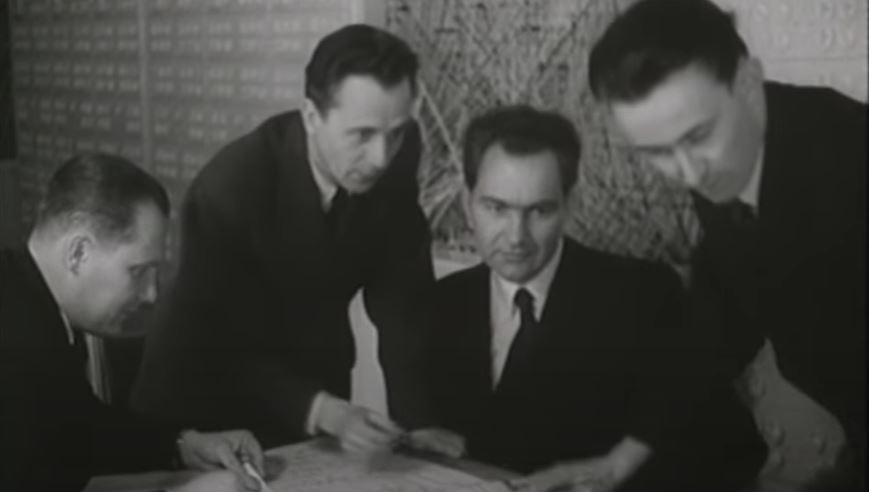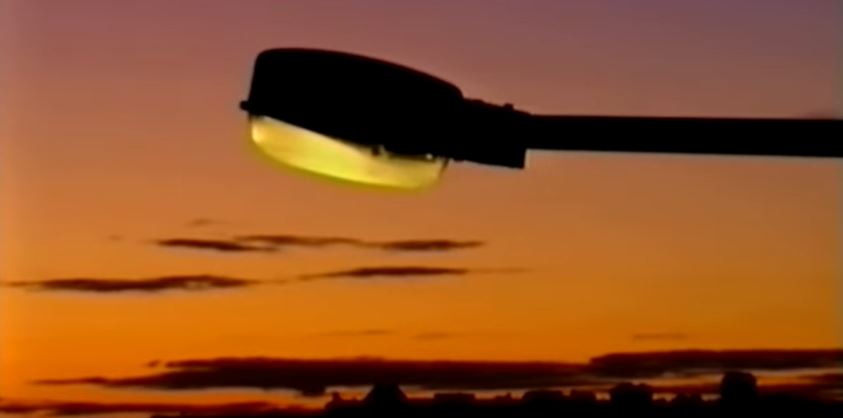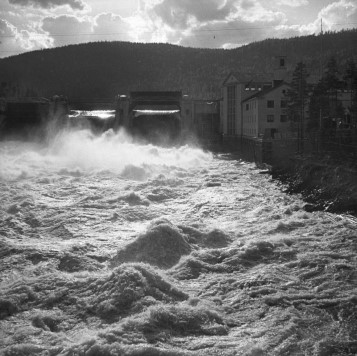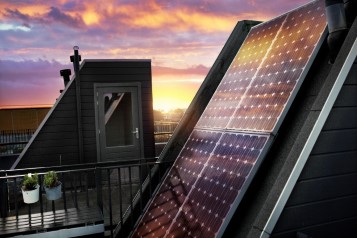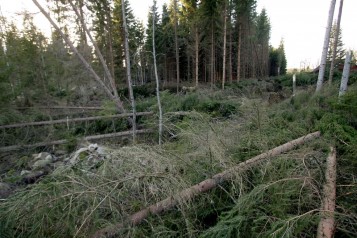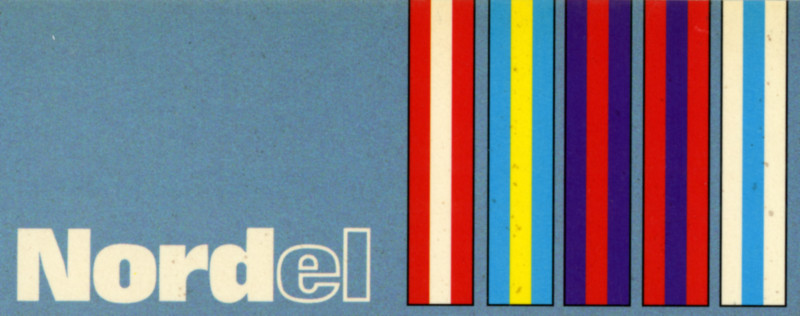
Coordinated production
The Swedish system was marked by cooperation between power companies from the very early days. This enabled the companies to optimise power generation, and produce electricity in the locations where it was cheapest. This collaboration was expanded in the 1970s to cover the entire Nordic region.
Coordination is a concept closely linked to another concept, 'the Swedish system'. This has characterised the Swedish power industry since the 1920s. The background is that, ever since Vattenfall was founded in 1909, private, municipal and state players have all managed the production, distribution and sale of electricity.

Control room from 1981. From the left: Anders Vikman, Gunnar Ålfors and Ingmar Vretman. Year: 1981 | Place: - | Creator: Okänd | ID: vf200095
The power companies that built power stations along the Swedish rivers, also built their own grids to transmit the power. As late as the early 1930s there were 15 relatively independent regional grids. It was certainly the case that some grids were connected, but it was only in the late 1930s that a more national approach to transmission grid development was adopted. By then it was also more efficient to coordinate the facilities of different companies.
During the Second World War, power producers were more or less forced to cooperate to safeguard the country's electrical power supply. Together they formed Centrala Driftledningen, CDL (Central Operational Management). The experience was positive and CDL continued to operate even after the war ended in 1945, including on the establishment of operational plans for the whole country and monitoring the power exchange. In 1949, Vattenfall summed up the situation as follows 'coordination in Sweden is probably currently the most complete of any country in the world'.
Coordination agreements between the biggest players
In order to further improve coordination, a Coordination Agreement between the eleven largest power companies, the so-called 'power club', was drawn up in 1964. It consisted of more long-term agreements on power exchange and production optimisation by continuous trading during the operating phase to ensure the country's cheapest production resources were fully exploited. If a power company had to produce power for its customers for 25 öre/kWh, and another company had spare capacity costing 15 öre/kWh, the cheaper facility was used and the profit shared. Something that benefited both parties.

Review of the electric turnover in Nordel 1980. Divided by country. Year: 1980 | Place: - | Creator: Okänd | ID: VF100005
As the Nordic countries have widely differing requirements for electricity generation, there was interest in coordinating resources from early on. Norway and Sweden have plenty of hydropower, while coal power has had a prominent role in Denmark and Finland has hydropower, fossil fuels and biofuels. In 1963 Nordel was formed, an organisation for planning expansion and operation of the Nordic power system. The Swedish way of coordinating the production was extended to all the Nordic countries in the early 1970s.

Nordel logotype. Year: - | Place: - | Creator: Okänd | ID: VF100006
Deregulation replaced coordination
When the issue of a deregulated electricity market became relevant in the early 1990s, the power industry was initially hostile. The largest power producers, including Vattenfall, were firm opponents of the establishment of an electricity exchange and the replacement of efficient production optimisation. The power producers argued that costs would increase by SEK 1 billion per year if production optimisation was abandoned for a deregulated market with an power exchange. But in 1994 the Swedish Competition Authority concluded that this production optimisation contravened the new Competition Act. This made it difficult for the power producers to maintain their coordination agreements.
But once deregulation became a fact on 1 January 1996, the experience from coordination activities helped the process run more smoothly. The players in the Nordic countries were already well acquainted with one another, and had confidence in each other. Thus the process of connecting all power producers to a common power market, NordPool, went relatively quickly.

NordPool Spot logotype. Year: - | Place: - | Creator: Okänd | ID: VF000200
Related videos
Video player requires marketing cookies.
To view this content please click here to allow marketing cookies.
Computerized planning in 1957 (in Swedish)
Video player requires marketing cookies.
To view this content please click here to allow marketing cookies.
Early arguments against complete deregulation (in Swedish)
Video player requires marketing cookies.
To view this content please click here to allow marketing cookies.

